 W
WKyoko Asakura was a Japanese sculptor. Her birth name was written 矜子. She was the second daughter of sculptor Fumio Asakura and sister of stage designer and painter Setsu Asakura.
 W
WChiyonosuke Azuma was a Japanese actor and dancer. He appeared in more than 40 films from 1954 to 1993.
 W
WShane Keisuke Berkery is an Irish-Japanese contemporary artist based in Dublin, Ireland. His cultural background has been a major influence on his work and is a frequent theme in his paintings. Berkery primarily works out of his studio in Dublin.
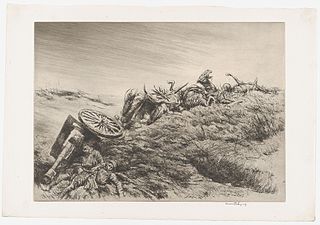 W
WKerr Eby was a Canadian illustrator best known for his renderings of soldiers in combat in the First and Second World Wars. He is held in a similar regard to Harvey Dunn and the other famous illustrators dispatched by the government to cover the First World War.
 W
WLéonard Tsuguharu Foujita was a Japanese–French painter and printmaker born in Tokyo, Japan, who applied Japanese ink techniques to Western style paintings. He has been called "the most important Japanese artist working in the West during the 20th century". His Book of Cats, published in New York by Covici Friede, 1930, with 20 etched plate drawings by Foujita, is one of the top 500 rare books ever sold, and is ranked by rare book dealers as "the most popular and desirable book on cats ever published".
 W
WShigeo Fukuda was a sculptor, medallist, graphic artist and poster designer who created optical illusions. His art pieces usually portray deception, such as Lunch With a Helmet On, a sculpture created entirely from forks, knives, and spoons, that casts a detailed shadow of a motorcycle.
 W
WGoseda Yoshimatsu was a Japanese painter mainly active in the Meiji era (1868–1912).
 W
WHanayo (花代), born Hanayo Nakajima , is a Japanese musician, photographer, and artist known for her playful and subversive artwork that is often rooted in Japanese culture. Hanayo currently lives and works in Japan.
 W
WHarada Naojirō was a Japanese painter who specialized in the yōga (Western) style. He was a friend of the novelist Mori Ōgai and served as the model for the protagonist in Ōgai's short story A Sad Tale (1890).
 W
WGyoshū Hayami was the pseudonym of a Japanese painter in the Nihonga style, active during the Taishō and Shōwa eras. His real name was Eiichi Maita.
 W
WKatsushika Hokusai, known simply as Hokusai, was a Japanese artist, ukiyo-e painter and printmaker of the Edo period. Hokusai is best known for the woodblock print series Thirty-Six Views of Mount Fuji which includes the internationally iconic print The Great Wave off Kanagawa.
 W
WEiko Ishioka was a Japanese art director, costume designer, and graphic designer known for her work in stage, screen, advertising, and print media.
 W
WSeiu Ito , also romanised as Seiyu Itoh was a Japanese painter, recognised today as "the father of modern kinbaku". Ito's life was the subject of director Noboru Tanaka's 1977 Nikkatsu Roman porno film Beauty's Exotic Dance: Torture!, the final entry in his "Showa Era trilogy".
 W
WShinsui Itō was the pseudonym of a Nihonga painter and ukiyo-e woodblock print artist in Taishō- and Shōwa-period Japan. He was one of the great names of the shin-hanga art movement, which revitalized the traditional art after it began to decline with the advent of photography in the early 20th century. His real name was Itō Hajime.
 W
WKiyokata Kaburaki was the art-name of a Nihonga artist and the leading master of the bijin-ga genre in the Taishō and Shōwa eras. His legal name was Kaburaki Ken'ichi. The artist himself used the reading "Kaburaki", but many Western sources transliterate it as "Kaburagi".
 W
WKawamura Kiyoo (川村清雄) (1852–1934) was a yōga artist in Meiji to Shōwa Japan.
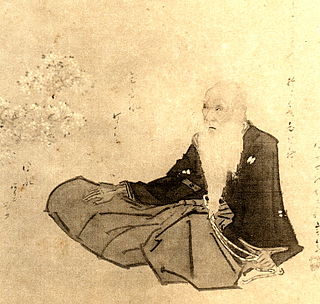 W
WKikuchi Yōsai , also known as Kikuchi Takeyasu and Kawahara Ryōhei, was a Japanese painter most famous for his monochrome portraits of historical figures.
 W
WRyūsei Kishida was a Japanese painter in Taishō and Shōwa period Japan. He is best known for his realistic yōga-style portraiture, but also for his nihonga paintings in the 1920s.
 W
WUtagawa Kunisada, also known as Utagawa Toyokuni III, was the most popular, prolific and commercially successful designer of ukiyo-e woodblock prints in 19th-century Japan. In his own time, his reputation far exceeded that of his contemporaries, Hokusai, Hiroshige and Kuniyoshi.
 W
WMiye Matsukata, sometimes written as Miyé Matsukata, was a Japanese-born American jewelry designer based in Boston, Massachusetts. She served on the first board of directors of the Society of North American Goldsmiths.
 W
WShizuka Miura was a Japanese ball-jointed doll maker, singer, songwriter, and guitarist. She became recognized in Japan for her doll work. Worldwide, Shizuka is best known for having been the founder and front woman of the rock band Shizuka.
 W
WMariko Mori is a Japanese multidisciplinary artist. She is known for her photographs and videos of her hybridized future self, often presented in various guises and featuring traditional Japanese motifs. Her work often explores themes of technology, spirituality and transcendence.
 W
WTakashi Murakami is a Japanese contemporary artist. He works in fine arts media as well as commercial and is known for blurring the line between high and low arts. He coined the term "superflat," which describes both the aesthetic characteristics of the Japanese artistic tradition and the nature of postwar Japanese culture and society, and is also used for Murakami's artistic style and other Japanese artists he has influenced.
 W
WTamotsu Nakamura, FRGS, is a Japanese explorer, alpinist, photographer and author. Since 1990, he has explored the mountainous areas between the Himalayas and the Sichuan basin; which he documents in photographs. He is a leading authority on the Alps of Tibet, the south-eastern sector of the Tibetan high plateau.
 W
WYuko Nii is a Japanese artist and philanthropist. Her work has included painting, printmaking, graphic design, stage set, costume and fashion design. She has written journalism, poetry, fiction, essays and philosophy, and published a book with Terrance Lindall, entitled Blue Eyed Satori.
 W
WTets Ohnari is a Japanese sculptor and contemporary artist living and working in both, Tokyo and Prague.
 W
WShinro Ohtake is a Japanese artist who was born in Tokyo and lives in Uwajima, Japan. He paints, creates installations and designs record covers and book covers. He has published dozens of books, such as a dream diary, a picture book, essays and art books. He is a graduate of Musashino Art University.
 W
WTogyū Okumura was a famous Japanese modern painter of the Nihonga style of watercolour painting. His original name was Yoshizō (義三). The name Togyū referred to a poem from his father who ran a publishing business.
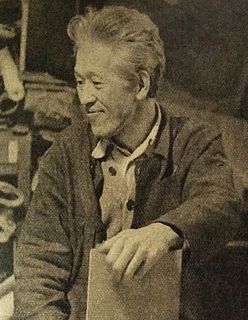 W
WKōshirō Onchi , born in Tokyo, was a Japanese print-maker. He was the father of the sōsaku-hanga movement in twentieth century Japan, and a photographer. His work was part of the painting event in the art competition at the 1932 Summer Olympics.
 W
WSakai Hōitsu was a Japanese painter of the Rinpa school. He is known for having revived the style and popularity of Ogata Kōrin, and for having created a number of reproductions of Kōrin's work.
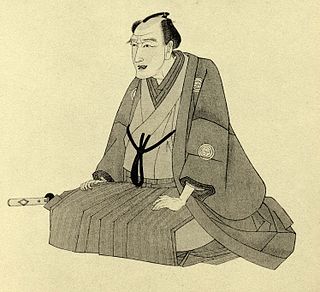 W
WSantō Kyōden was a Japanese poet, writer and artist in the Edo period. His real name was Iwase Samuru , and he was also known popularly as Kyōya Denzō . He was the brother of novelist Iwase Momoki , who was known as Santō Kyōzan.
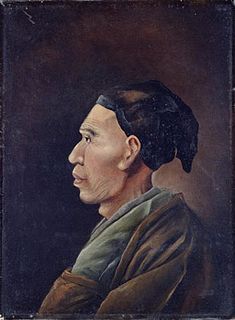 W
WShiba Kōkan , born Andō Kichirō (安藤吉次郎) or Katsusaburō (勝三郎), was a Japanese painter and printmaker of the Edo period, famous both for his Western-style yōga paintings, in imitation of Dutch oil painting styles, methods, and themes, which he painted as Kōkan, and his ukiyo-e prints, which he created under the name Harushige, but also producing forgeries of the works of Suzuki Harunobu. He is said to have boasted of his ability to forge the great master so well. He also was engaged in Western learning (Rangaku) in the field of astronomy.
 W
WKataro Shirayamadani, also known as Kitaro Shirayamadani was a Japanese ceramics painter who worked for Rookwood Pottery in Cincinnati, Ohio from 1887 until 1948.
 W
WYasushi Sugiyama was a Japanese painter of the Shōwa and Heisei eras, who practiced the nihonga style of watercolour painting.
 W
WYuri Suzuki is a Japanese artist, designer, and musician. Primarily known for the design of sound-based objects, Suzuki is a partner of the London office of Pentagram.
 W
WTakahashi Shōtei (高橋松亭), born Hiroaki was a 20th-century Japanese woodblock artist in the shin-hanga art movement.
 W
WTakahashi Yuichi was a Japanese painter, noted for his pioneering work in developing the yōga (Western-style) art movement in late 19th-century Japanese painting.There were many Japanese painters who tried Western painting and Western style painting in the modern age, but Yuichi is said to be the first "Western painter" in Japan who learned full-scale oil painting techniques and was active from the late Edo period to the middle of the Meiji era.
 W
WToyohara Kunichika was a ukiyo-e Japanese woodblock print artist. Talented as a child, at about thirteen he became a student of Tokyo's then-leading print maker, Utagawa Kunisada. His deep appreciation and knowledge of kabuki drama led to his production primarily of yakusha-e, which are woodblock prints of kabuki actors and scenes from popular plays of the time.
 W
WKōgyo Tsukioka , sometimes called Kōgyo Sakamaki , was a Japanese artist of the Meiji period. He was a student and adopted son of Tsukioka Yoshitoshi, and also studied with Ogata Gekkō. Although Kōgyo sometimes painted other subjects, for most of his career he made pictures of Japanese noh theatre, either as large-scale paintings or colored woodblock prints. Many of the latter were published in series and sold as multi-volume sets. Some sets, such as Nōgaku zue, have been preserved as albums in their original bindings, including accordion-style bindings known as orihon, while other sets such as Nōga taikan, were issued in sewn bindings known as yamato toji. Although most bound sets belong to institutional collections, individual prints by Kōgyo can still be found through dealers specializing in Japanese prints.
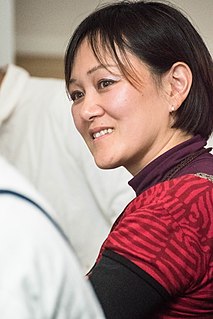 W
WMaki Ueda is a Japanese artist. She is currently based in Okinawa and Tokyo, Japan.
 W
WYohji Yamamoto is a Japanese fashion designer based in Tokyo and Paris. Considered a master tailor alongside those such as Madeleine Vionnet, he is known for his avant-garde tailoring featuring Japanese design aesthetics.
 W
WKiyoshi Yamashita (山下 清, Yamashita Kiyoshi was a Japanese artist. He is famous for his wanderings throughout Japan, during which he often wore a sleeveless undershirt, garnering the nickname "The Naked General."
 W
WMichiko Yamawaki, was a Japanese designer and textile artist who trained at the Bauhaus. She was one of four Japanese students to study at the Bauhaus in Dessau, studying drawing, weaving, and typography.
 W
WYukihiko Yasuda was the pseudonym of a major figure in Taishō and early Shōwa period Japanese painting, and is regarded as one of the founders of the Japanese painting technique of nihonga. His real name was Yasuda Shinzaburō.
 W
WTsukioka Yoshitoshi was a Japanese printmaker.